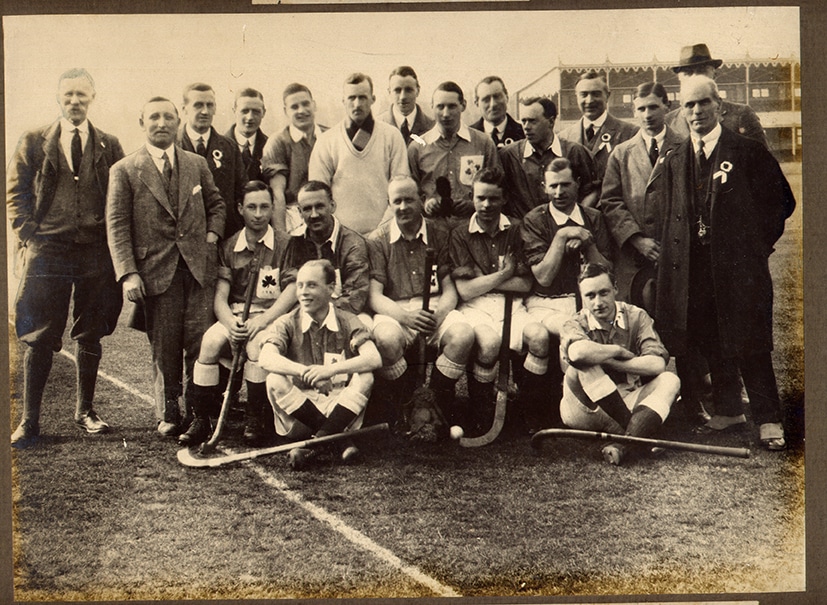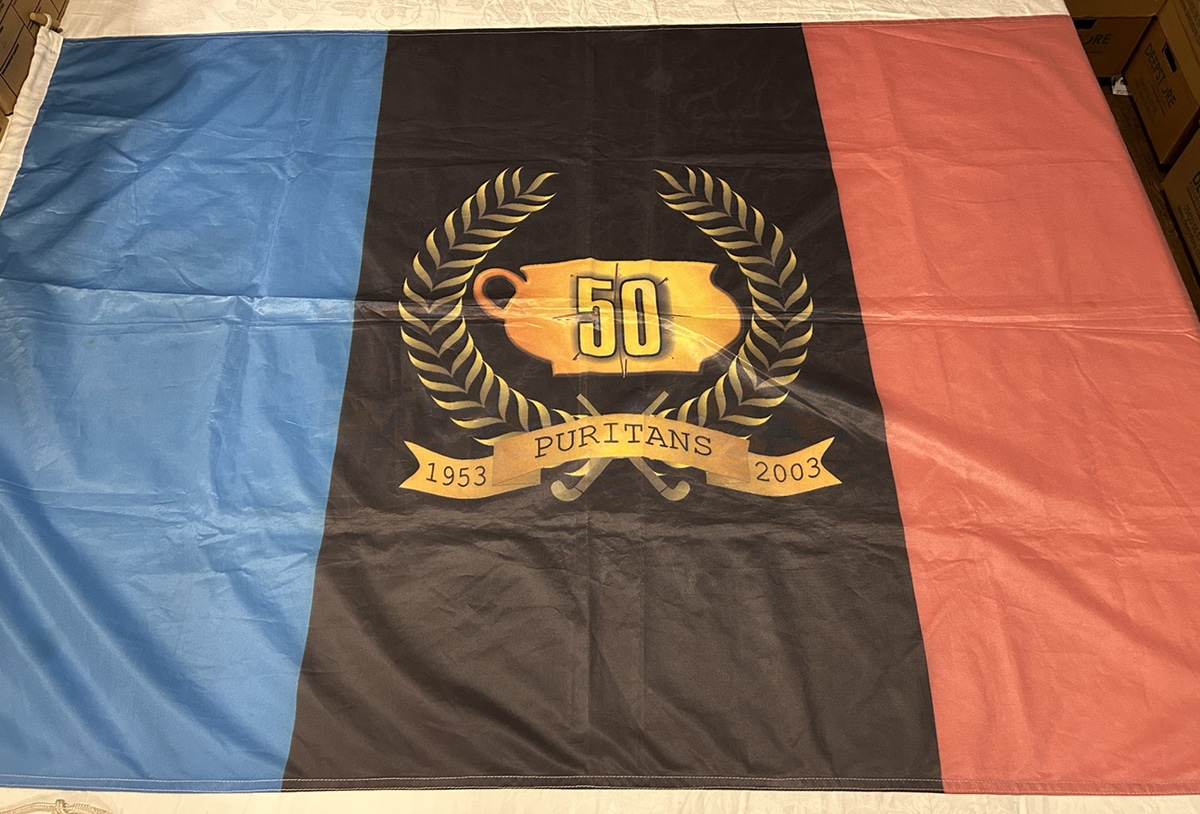 |
| England vs Ireland during the Olympic final of 1908. |
In January 1948, Hockey World magazine published an extract from the book Hockey in Ireland by TSC Dagg. In it, Dagg compares the ‘traditional’ playing styles of the English and Irish men’s national teams by drawing on previous literature.
Eustace E White wrote in 1909:
“Combination, a scientific and premeditated combination, has always been … the keynote of the English style [of hockey], just as individual effort and reliance on personal brilliance and dash have formed the chief part of the Irish game.”
England’s prolific forward Stanley Shoveller wrote in 1922:
“The more unified and methodical methods of an English team have often been completely upset by the hustle and bustle, dash and devil, hard-hitting, and wing-to-wing play of their Irish opponents”.
The contrasting styles of the two national teams provide a tantalising insight into how hockey was played at the turn of the twentieth century. Conceivably clichéd, it does not suggest the Irish approach was inferior but different. Their style seems reasonably simple to grasp: a lot of individualism, athleticism and “dash”. But what of England’s preference for ‘combination’?
 |
|
The Ireland men’s team who played England in Birmingham, 1923. Courtesy of the Irish Hockey Archive. |
What Is Combination?
A well-used term in its day but perhaps alien to the modern ear, combination appears to have heralded the beginning of position-based tactical play in hockey and – heaven forbid – passing the ball between teammates! It stood as a marked difference from the “hustle and bustle”, “personal brilliance” and charging wing to wing in search of the ball that appears to have been the preferred style of the Irish.
There is a section dedicated to combination in the 1899 book Hockey: Historical and Practical by PA Robson and J Nicholson Smith.
“[Previously] hockey… [was] exclusively a dribbling game. The player who happened to have the ball kept it … as long as he could … without passing the ball to another player on his own side … For the past two seasons however [1896-1898], a desire to change has been made in hockey. [The] combination game is becoming more and more known.”
Within the same page there is also a fascinating (if amusingly old-fashioned) notion that adopting a combination style of play required greater discipline:
“The captain must have his eyes constantly on the watch to keep the men of his side in their places. There should be no compromise. The temptation may be strong in a wing player to rush to the opposite wing because there seems a chance of doing useful work, but it must be checked. Laxness in this respect is the source of many defeats and every offence of the kind should be at once noticed and the offender rebuked. If a player continues to offend the best plan is to leave him out of the team ‘til he learns to obey. He may urge many grounds in defence of his excess of zeal but the principle is wrong.”
It would seem combination was a key evolution leading to the position-based game of coached systems that we play today. Perhaps the Irish style – seemingly one player running with the ball, chased around by players (of both sides) trying to get something on the ball – might even have been more fun.
What a varied game international hockey must have been in its formative decades, even if the early 1900s were a busy time to be a hockey captain with all the reprimanding!
A Nod to the Library
All books mentioned reside in The Hockey Museum’s fascinating and ever-growing library. If this tickles your fancy, research visits are available by appointment.








